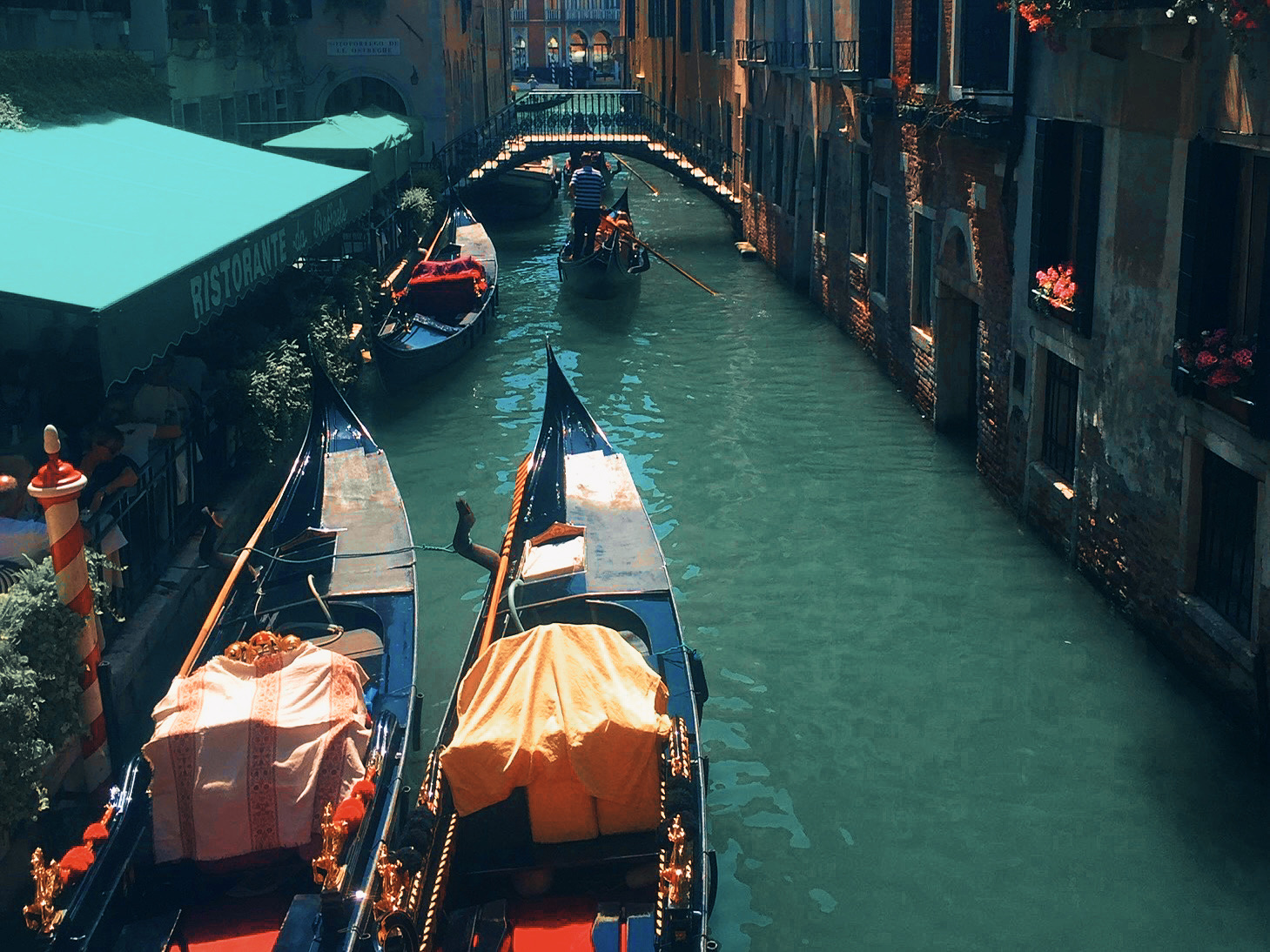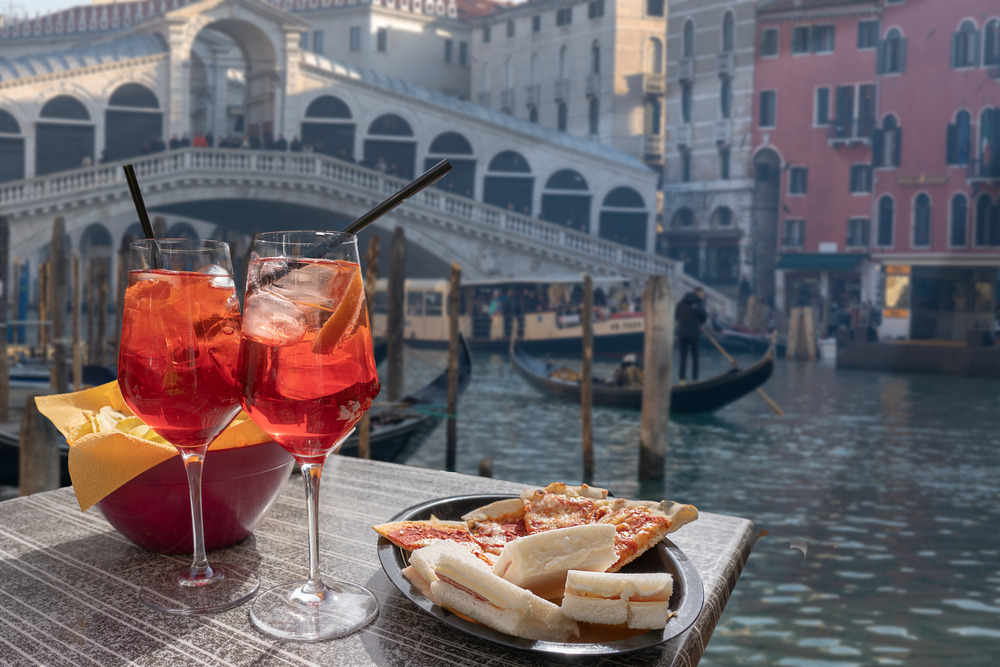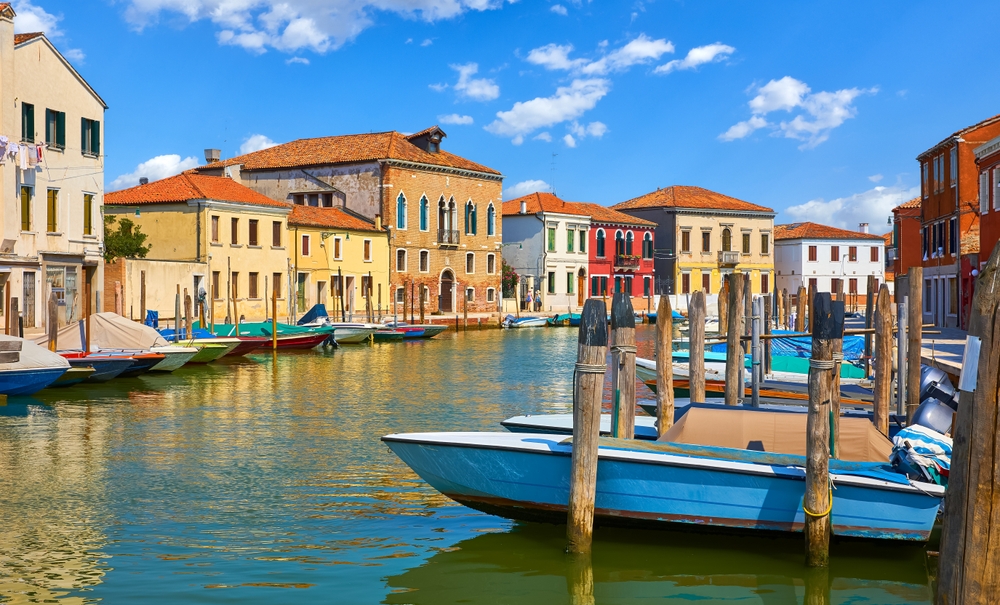Guide to Arrival in VeniceRead about flights, trains, ...
Venice Travel Guide: Local Tips for your Trip
This complete guide is your key to unlocking the romantic and mysterious heart of the “Floating City”.
From your arrival to accommodation, dining, top attractions, and local tips, find everything you need to plan your trip to Venice, Italy.
What You Need to Know before Visiting Venice:
Starting in 2024, Venice has introduced a visitor access fee to manage tourism and preserve its unique environment. The fee, ranging from €3 to €10, applies to day-trippers and is designed to reduce congestion and support local infrastructure. Residents, students, and those staying overnight are exempt.
Visitors must pay the fee online or at designated kiosks before entering the city. This fee is only required during peak tourist season, from April to October. The initiative aims to balance tourism with sustainability, protecting Venice's historic sites and delicate ecosystem while enhancing the overall visitor experience.
Note: You can view the calendar of applicable access fee dates and complete the payment on the official website of the Municipality of Venice.

Where is Venice Located?
Venice, a city in northeastern Italy, is located in the Veneto region, stretching across 118 small islands in the Venetian Lagoon along the Adriatic Sea. Covering around 160 square miles, Venice has a population of about 260,000, with around 50,000 residing in its historic center.
Renowned for its canals, Venice is famous for landmarks like St. Mark's Basilica, the Grand Canal, and the Rialto Bridge, alongside its unique network of waterways and bridges. This floating city, rich in history, art, and architecture, offers a blend of stunning views, cultural heritage, and a romantic atmosphere like no other.
Quick Facts about Venice, Italy
- Name: Venezia (Italian), Venesia (Venetian dialect)
- Region: Veneto
- Area: 160 square miles (414 square kilometers)
- Altitude: 3 feet (1 meter)
- Districts: 6 administrative districts (Sestieri)
- Population: 260,000 (city), ~50,000 (historic center)
- Top Attractions: St. Mark’s Basilica, Doge’s Palace, Grand Canal, Rialto Bridge, St. Mark’s Square, Bridge of Sighs, Murano, Burano, Gallerie dell'Accademia, Peggy Guggenheim Collection >> Read more: Extraordinary Attractions in Venice

Getting to Venice
Venice, the enchanting city of canals and historic charm, is accessible via several convenient transportation options, each offering its own unique journey to this captivating destination.
Whether you’re flying in from afar, traveling by train, or arriving by bus, getting to Venice is part of the adventure. Here’s a guide to help you navigate your way to this magical city:
Transportation Options:
Arriving in Venice:
Plan Your Trip to Venice

Must-See Attractions in Venice
Unmissable Experiences in Venice

Tips on Navigating Venice’s Canals
Venice, with its intricate network of canals, offers a unique and enchanting way to explore the city. Whether you're gliding along in a Vaporetto, catching a ride on a Traghetto, or savoring the romance of a gondola, getting around the canals is an integral part of the Venetian experience.
To make the most of your time in this magical city, here are some practical tips for navigating Venice’s waterways efficiently and enjoyably.

When is the Best Time to Visit Venice?
The best time to visit Venice depends on your preferences for weather, crowds, and the type of experience you seek. It’s equally important to consider the impact of overtourism when planning your trip, as Venice faces significant challenges, particularly during peak seasons like summer. Large crowds can affect both the city's infrastructure and your overall experience.

Public Holidays, Events and School Breaks
Public holidays and school breaks can significantly affect crowds, attraction accessibility, accommodation prices, and overall experience in Venice. If you prefer avoiding large crowds, it’s best to plan your visit outside these peak times. However, public holidays, festivals and events can provide unique festive atmospheres and cultural events.
Here’s an overview of major holidays and special events in Venice:
- New Year's Day (January 1st)
- Epiphany (January 6th)
- Carnival of Venice (February, dates vary): A world-famous festival known for its elaborate masks and vibrant parades.
- Feast of the Redeemer (Festa del Redentore) (Third Sunday in July): Celebrated with fireworks and a temporary bridge of boats.
- Assumption of Mary (August 15th)
- All Saints' Day (November 1st)
- Christmas Day (December 25th)
- St. Stephen's Day (December 26th)
School holidays in Italy generally follow a national calendar with breaks in:
- Christmas and New Year (about two weeks)
- Easter (one week)
- Summer break (late June to early September)

How Much Time Should I Plan to Visit Venice?
Tailor your visit based on your interests to ensure you experience both the iconic sights and the charming, off-the-beaten-path aspects of Venice.

Dining in Venice
Venice’s culinary scene is a delightful blend of tradition and innovation, offering a range of dining experiences, from charming cicchetti bars to elegant seafood restaurants on the canal.
Savor Venetian specialties like risotto al nero di seppia (squid ink risotto) and sarde in saor (marinated sardines), alongside freshly prepared seafood and classic Venetian pastries.
Venetian food culture celebrates fresh, local ingredients and centuries-old recipes, making each meal a true taste of the city’s unique heritage. Dining in Venice is about more than just food; it’s about enjoying the city’s distinctive atmosphere, whether at a cozy trattoria or a refined dining spot with canal views.
Fresh, Seasonal Ingredients
Venetian cuisine is heavily influenced by the lagoon and the sea. Fresh seafood, risotto, and the famous small bites known as Cicchetti are must-tries.
Simplicity and Balance
Venetian dishes often focus on simplicity, using a few key ingredients to enhance natural flavors, making them both delicious and accessible.
Regional Specialties
Don’t miss out on Venetian specialties like sarde in saor (sweet and sour sardines), bigoli pasta, and local wines from the Veneto region.
Restaurants
For an authentic meal, visit family-run osterie or explore hidden gems in the backstreets. Some top recommendations include Ostaria dai Zemei and Osteria La Zucca.
Coffee Culture
Coffee plays a key role in Venetian daily life, from quick espressos enjoyed at local bars to leisurely cappuccinos, reflecting the city’s passion for quality and social interaction.
Aperitivo & Wine Culture
Venice offers a vibrant wine culture with local favorites like Prosecco, Valpolicella, and Amarone. Enjoy wine paired with cicchetti at a traditional bacaro like Osteria Al Squero and Cantine del Vino già Schiavi, or indulge in the Venetian aperitivo ritual with a glass of wine or Spritz during the early evening hours.

Where to Stay in Venice?
Choosing the right place to stay in Venice can greatly enhance your visit. The city offers a range of options, from central locations near major landmarks to quieter neighborhoods that provide a more intimate Venetian experience.
Each neighborhood has its own distinct character, from bustling tourist spots to serene residential areas, ensuring there's something to match every traveler's preference and budget.
Here are Venice’s most popular neighborhoods:
Tips for Choosing the Right Area
- Families: Stay near San Marco for convenience.
- Couples: Dorsoduro offers a more intimate, romantic setting.
- Solo Travelers: Cannaregio is a quieter, affordable option.
- Honeymooners & Luxury Seekers: Areas near St. Mark's Square and the Grand Canal offer upscale accommodations with stunning views and historic charm.

Shopping in Venice
Venice offers a delightful shopping experience, blending luxury with local charm. From high-end boutiques near St. Mark’s Square to traditional shops on Murano Island, Venice caters to every shopper’s taste. Whether you’re after exquisite Venetian glass, artisanal lace, or unique souvenirs, the city’s shopping districts have something special to offer.
Explore handcrafted items, fine jewelry, and gourmet treats as you navigate Venice’s vibrant shopping scene. Each neighborhood provides its own distinctive selections, making Venice a must-visit destination for shopping enthusiasts.
What to Buy in Venice

Travel Tips for Venice
Venice, the enchanting city of canals and historic charm, offers a unique travel experience. To make the most of your visit, especially during peak season, follow these essential tips:
Plan and Prepare
- Book Early: Secure flights, trains, boats, and accommodations in advance to get the best deals and ensure availability.
- Transport Tickets: Purchase Vaporetto (water bus) passes or Venice Cards for easy travel on public transport and access to various attractions.
- Skip-the-Line Tickets: Book tickets in advance for popular attractions like St. Mark’s Basilica and the Doge’s Palace to avoid long queues.
- Free Wi-Fi: Take advantage of free Wi-Fi hotspots available in various public areas and some cafes and restaurants.
- Carry Cash: Have some euros on hand, especially for small shops and local eateries.
Packing Tips
- Avoid large luggage: Venice's narrow streets, stairs, and bridges make it difficult to navigate with big suitcases. Pack light for easier mobility!
- Comfortable Shoes: Wear comfortable walking shoes suitable for exploring cobblestone streets and bridges.
- Layered Clothing: Pack layers for fluctuating temperatures and a light raincoat for unexpected showers. >> See our list of top things to do on a rainy day in Venice
- Summer Essentials: Bring sunscreen, sunglasses, and a hat for sunny days.
- Reusable Water Bottle: Stay hydrated by refilling at public fountains and avoid single-use plastics.
Safety Tips
- Beware of Pickpockets: Venice is generally safe, but always be cautious of pickpockets in crowded areas. Stick to well-lit streets at night and avoid narrow, deserted alleys.
Mistakes to Avoid When Visiting Venice
- Don’t feed the pigeons: Feeding pigeons in St. Mark’s Square is prohibited and can result in fines.
- Avoid sitting on monuments: Sitting or eating on steps and bridges is not allowed, especially in busy areas like St. Mark’s Square.
- Don’t expect cars: Venice is entirely pedestrian and boat-based, so plan your transport accordingly and wear comfortable shoes for walking.
- Avoid tourist trap restaurants: Steer clear of restaurants with “tourist menus” or those with aggressive waiters in high-traffic areas. Opt for authentic spots off the main streets.
- Respect local customs: Venetians appreciate respectful behavior. Dress modestly when visiting churches.
- Know the tipping culture: Tipping is not obligatory in Venice. In restaurants, rounding up the bill or leaving 5-10% is common. Check if a service charge (servizio) is already included.

Quick History of Venice
Venice was founded in the 5th century by refugees fleeing barbarian invasions. Built on a lagoon, it became a powerful maritime republic by the Middle Ages, dominating trade between Europe and the East. Venice was known for its naval strength, wealth, and cultural achievements during the Renaissance, influencing art, architecture, and music.
Its decline began in the 17th century due to new trade routes and military defeats. In 1797, Napoleon conquered Venice, ending its independence. It later became part of Italy in 1866. Today, Venice is renowned for its canals, history, and cultural heritage, attracting millions of visitors worldwide.
Architecture of Venice
Venice’s architecture is a unique blend of Gothic, Byzantine, and Renaissance styles, shaped by its maritime history and trade connections. The city is famous for its palaces, churches, and bridges built on wooden piles driven into the lagoon.
Iconic structures like St. Mark's Basilica showcase Byzantine domes and mosaics, while the Doge’s Palace combines Gothic and Renaissance elements. Venetian Gothic architecture, characterized by pointed arches and ornate facades, is prominent in buildings like the Ca' d'Oro. Venice’s narrow streets, canals, and stone bridges, such as the Rialto Bridge, contribute to its distinct and romantic urban landscape, unlike any other city.
Related Articles:
October 10, 2024
September 23, 2024
September 22, 2024
September 21, 2024
September 21, 2024
September 13, 2024
